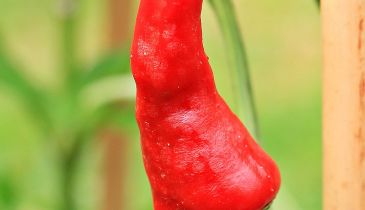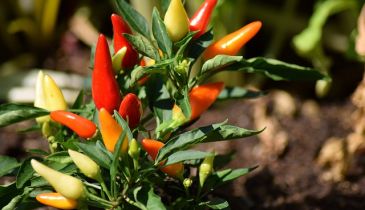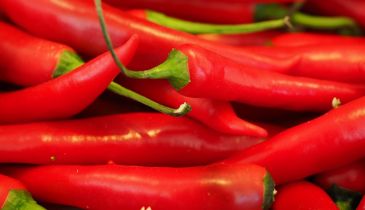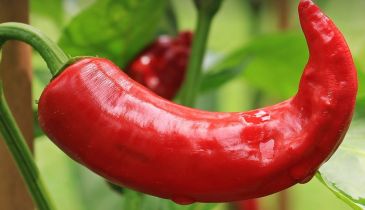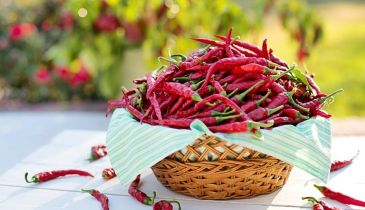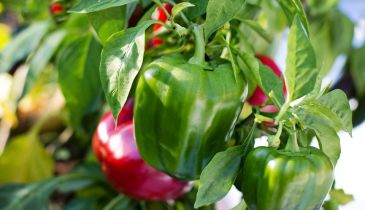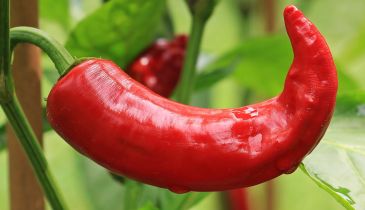How Many Hours Of Light Do Chillies Need?
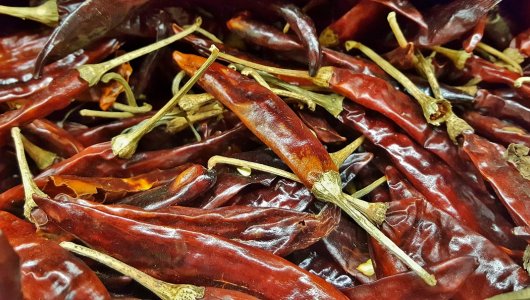
Recently while researching the home-growing of different plants, I kept wondering if the light properties of chilies are different from other plant types.
How Many Hours of Light do Chillies Need? In general, chilies need a minimum of 5 hours of direct sunlight per day to grow and are recommended to receive 8 to 12 hours of sunlight to grow properly. You can supplement natural direct sunlight with artificial light and lighting conditions for chilies may vary across different sorts.
Continue reading as I explain the unique properties of chilies and how to give them the best conditions to grow in.
So, How Many Hours of Light do Chilies Need?
Chilies are a day-neutral plant type. This means that their ability to flower is actually unaffected by the amount of natural or artificial light they are exposed too. However, they do require sunlight and the right temperatures to flower in the proper way we know today.
Natural Direct Sunlight
Chilies are a fruiting plant, and usually, require a minimum of five hours of direct sunlight per day to grow properly. The expert's advice on how long you should expose them to light for the best growing conditions is eight to twelve hours of direct sunlight per day.
There are tricks to amplify the amount of sunlight your chilies get. Surrounding your plants with tin foil or marble can help increase the light they receive by reflecting and amplifying sunlight towards your plants.
This method is especially used in countries with many cloudy days or where the sun isn’t as radiant as in most warmer countries.
Artificial Light
A good alternative to direct sunlight is using artificially created light to give your chilies the light they need. You can find specific light bulbs for plant purposes in most gardening stores, which can usually be plugged into any normal household lamp.
Mixing direct sunlight with artificial light will give you similar if not the same results to using just direct sunlight.
If using artificial light, it's important to not leave it on all day, for photosynthesis to work, your plants need some hours of no to little light to complete the process.
The generally considered the best way to grow plants with artificial lights, is the use of LED grow lights.
Using LED grow lights is a common way to grow plants indoors for good reason. Here are the main reasons to switch to LED grow lights if you haven’t already:
- Money saver. The LED grow lights are energy-efficient and can save a lot of money on your power bill compared to other grow lights.
- Temperature. LED lights are cool to the touch in the way they are made, meaning less need to cool your plants and less risk of burning yourself touching a hot light bulb.
- Full Spectrum. Led lights have a range of wavelengths that emits light in a spectrum that is beneficial for your plants in all stages of growth without having to change light source during the process.
Find your LED grow light on amazon here!
Temperature
The successful growth of chili peppers also requires the right temperature levels. They require a rather warm temperature for their fruits to grow in an ideal way. The general best daytime temperature for fruiting vegetables in general, which includes chili peppers, is around 80F.
The nighttime temperature level should be between 60F and 70F, this can vary depending on the type of chili you are growing, so make sure to do your research for the chili you are planting.
So in conclusion, in general chilies need a minimum of 5 hours of sunlight/artificial light per day, but for the best results you should give them between 8 and 12 hours of light depending on the type of chili you are growing
Make sure to always research the type of chili you want to plant, to make sure you give it the right conditions to flower properly.
Scoville Scale For Chilies
You may have heard of the Scoville scale for chilies. The Scoville scale rates chilies depending on the amount of capsaicin they contain. Capsaicin is what makes chilies hot depending on the level they contain.
When picking out chili to grow it is imporant to know the Scoville scale of the chili to make sure you understand how hot it is, and if it suits your taste. Some chilies can be quite dangerous if you aren’t used to spicy food or have certain medical complications, so make sure you choose a chili suited for your spicy needs.
The Scoville Scale
In general, the Scoville scale refers to a chili's spiciness as “pungent”, when the levels get higher than 80.000 points on the scale, a chili is considered very highly pungent. What might shock you is that some of the hottest chilies go into several million points on the scale, making them unbelievably hot.
Here is a table of some chilies and other Capsaicin products and their Scoville scale ratings:
Note: The ratings displayed is the MAXIMUM score a pepper of that type can have, some peppers of similar names have lower scores.
| Chili Pepper | Scoville Rating |
| Bull Nose Large pepper | 0.00 |
| Mulato | 2,000.00 |
| Anaheim | 2,500.00 |
| Jalapeno | 8,000.00 |
| Serrano | 22,000.00 |
| Brazilian Starfish | 30,000.00 |
| Cayenne | 50,000.00 |
| Tepin | 265,000.00 |
| Devil's Tongue | 325,000.00 |
| Scotch Bonnet | 325,000.00 |
| Habanero | 425,000.00 |
| Ghost Pepper | 1,040,000.00 |
| Police Pepper Spray | 5,300,000.00 |
| Capsaicin(pure) | 16,000,000.00 |
Check out some cool posters and banners of Scoville scales here!
5 Interesting Facts About Chili Peppers
Here are some interesting facts about chilies you may not know.
- Thousands of different types. The range of chili peppers is vast, the chili pepper plant type has a capability to mutate itself very quickly and makes it possible to mix different sorts of chili together, making whole new types. To this day people still create new chilies each with different properties. A popular thing to aim for is creating a chili that can claim the spot of the world's hottest chili.
- It's not the seeds that are spicy. Contrary to popular belief, it is actually not the seeds in chili peppers that gives of the most spiciness.The flesh in the actual peppers is what burns you, and usually, it is the flesh closest to the stem that is hottest since it generally has the highest content of capsaicin.
- Only Mammals Are Affected. The capsaicin that makes the chili spicy to us mammals is actually not any other animal types. This is one of the reasons why birds especially are responsible for the spreading of wild peppers. They eat the peppers happily without getting burned, and excrete the seeds all over nature, creating wild pepper growths across the land.
- The Capsaicin in Chilies is a Natural Defense Mechanism. Some experts have found out that the capsaicin content of peppers is actually a defense mechanism against hostile bacteria and fungi. Scientists found in areas with high bug concentrations around chilis, that the chilies in these areas were generally very spicy. The reason for this is because bugs have a tendency to poke holes in the peppers, making way for the fungi and bacteria, the chili pepper will then amplify its capsaicin and kill off the harmful fungi before it can contaminate the whole plant.
- Eating Spicy Peppers Can Help Get Rid of a Stuffy Nose. The capsaicin in peppers has many properties, and can actually help you unblock that stuffy nose. The capsaicin in peppers can help keep your mucus thin, which can substantially lower your risk of getting infections.

